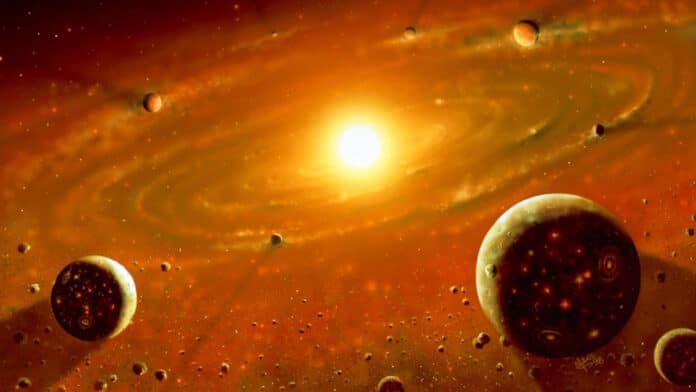The classical theory for terrestrial planet formation involves a phase of giant impacts between embryos over timescales of 50–100 Myr. The Earth’s formation was thought to have taken more than 100 million years, according to researchers, until recently. It was also a widely held theory that water was delivered through fortuitous encounters with asteroids like comets that were rich in water.
However, a recent study from the University of Copenhagen raises the possibility that it wasn’t accidental.
According to scientific evidence, the Earth was formed by the extremely rapid accumulation of tiny millimeter-sized pebbles. According to this theory, the Earth was created in a million years. The results suggest that water on Earth results from its formation.
The study’s findings demonstrate that the Earth formed far more quickly than previously believed and that the presence of water is an anticipated result of that formation process. This information is crucial because it provides information about planets outside our solar system.
Habitability is the potential for a planet to have the right ingredients at its surface for life to develop. One key ingredient for habitability is water.
According to one idea, planets are created over the course of 100 million years by the steady collision of bodies, which gradually increases their size. In this case, water on Earth would require some form of random occurrence. This might have happened, for instance, if comets, which are icy bodies, pelted the Earth’s surface after its formation.
Associate Professor Martin Schiller, also behind the new study, said, “If that is how Earth was formed, then it is pretty lucky that we have water on Earth. This makes the chances that there is water on planets outside our Solar System very low.”
The new study’s authors propose an alternative idea for how Earth was created.
Ph.D. student Isaac Onyett, the study’s corresponding author, said, “The planets were expanding in a disc around the youthful Sun. The disc was covered in microscopic dust. Once a planet reaches a certain size, it begins to function somewhat like a hoover, quickly collecting all that dust. And as a result, it will become Earth-size in a matter of a few million years.”
“This vacuuming of small dust particles not only played a vital role in Earth’s formation but ensured that water was delivered to our planet.”
“The disk also contains many icy particles. As the vacuum cleaner effect draws in the dust, it also captures a portion of the ice. This process contributes to the presence of water during Earth’s formation, rather than relying on a chance event delivering water 100 million years later.”
With the new knowledge and understanding of the mechanisms, water is more likely to be present on other planets. This theory would predict that whenever you form a planet like Earth, you will have water on it. If you go to another planetary system where there is a planet orbiting a star the size of the Sun, the planet should have water if it is in the right distance.
Journal Reference:
- Onyett, I.J., Schiller, M., Makhatadze, G.V. et al. Silicon isotope constraints on terrestrial planet accretion. Nature (2023). DOI: 10.1038/s41586-023-06135-z
